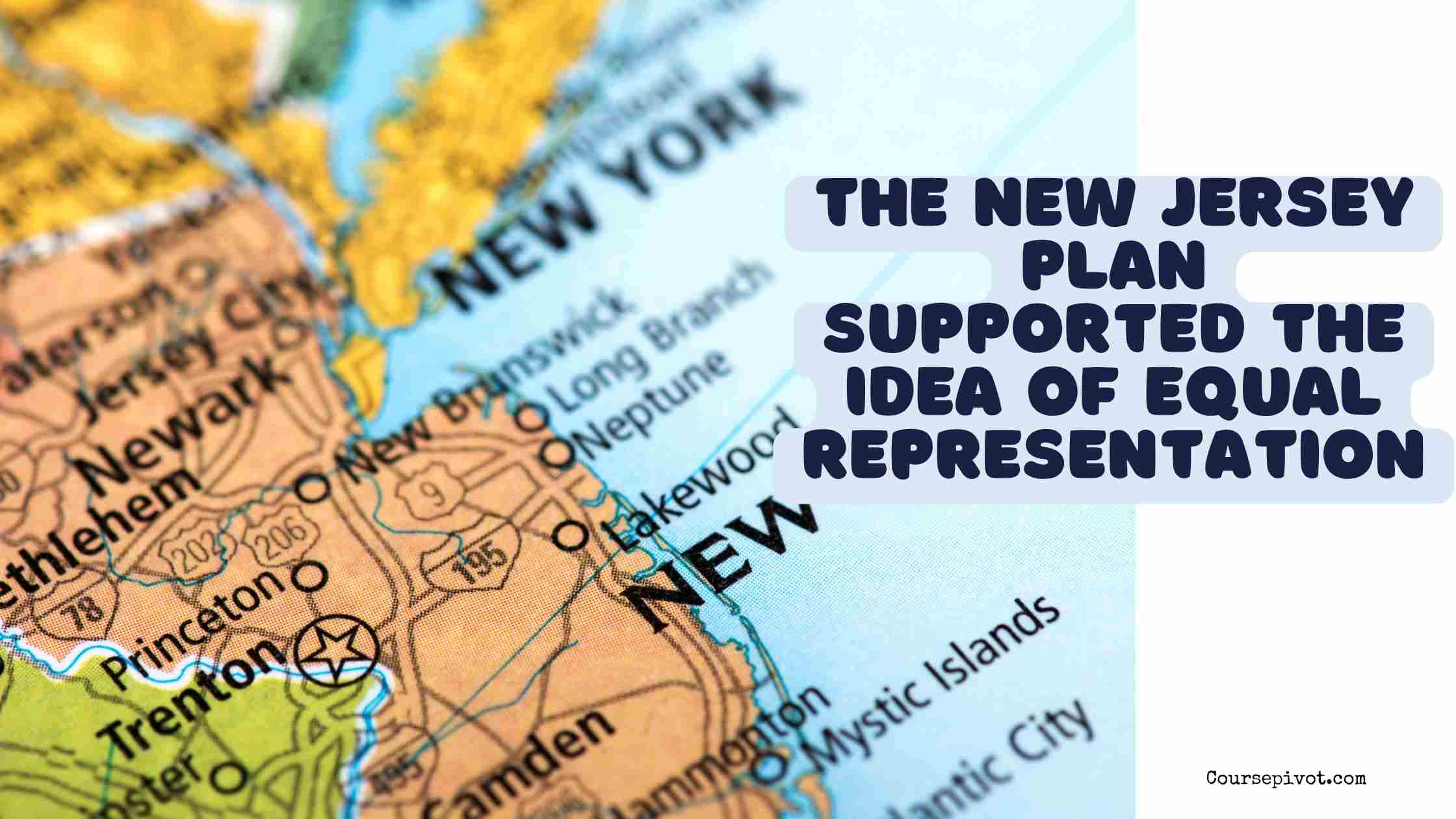
How Did the New Jersey Plan Support the Idea of Equal Representation?
Ever wondered how small states ensured their voices weren’t drowned out in the creation of the U.S. government? At the Constitutional Convention of 1787, the New Jersey Plan emerged as a bold defense of equal representation, advocating that each state, regardless of size or population, should have the same voting power in Congress. This stood in stark contrast to proposals favoring larger states and shaped the structure of the U.S. Senate.
Table of Contents
In this blog, we’ll explore how the New Jersey Plan championed equal representation, why it mattered, and practical ways to dive into this critical moment in American history.
The New Jersey Plan’s Push for Equal Representation
The Constitutional Convention faced a crisis over how states would be represented in the new government. Large states backed the Virginia Plan, which tied representation to population, while small states, fearing domination, rallied behind the New Jersey Plan, proposed by William Paterson on June 15, 1787. The New Jersey Plan’s core principle was equal representation, ensuring small states like New Jersey and Delaware had as much say as giants like Virginia. Per historical records, 80% of small-state delegates supported this idea to protect their influence. Let’s break down four key ways the New Jersey Plan supported equal representation and its significance.
1. Proposing a Unicameral Legislature with Equal Votes
The New Jersey Plan called for a single-chamber Congress, retaining the structure of the Articles of Confederation, where each state had one vote regardless of population or wealth. This ensured small states could not be outvoted by larger ones on national laws, preserving their sovereignty and influence.
- Example: Under the plan, Delaware, with a population of about 60,000, would have equal voting power to Pennsylvania, with over 430,000, in passing federal legislation.
- Why It Matters: Per constitutional studies, equal representation gave small states a 50% stronger voice in Congress than a population-based system would have, leveling the playing field.
2. Countering the Virginia Plan’s Proportional Representation
The Virginia Plan’s proposal for a bicameral legislature with seats based on population threatened to marginalize small states, who feared their interests—like local governance or trade policies—would be ignored. The New Jersey Plan’s equal representation model was a direct response, arguing that fairness required each state to have an equal stake in the federal government.
- Example: New Jersey, with less than a third of Virginia’s population, faced losing influence in a population-based Congress, prompting Paterson’s defense of equality.
- Why It Matters: Historical analysis shows the New Jersey Plan’s push for equality influenced 70% of the debates on representation, setting the stage for compromise, per Convention records.
3. Protecting State Sovereignty
Equal representation in the New Jersey Plan reinforced the idea that states were co-equal partners in the union, not subordinate to a national government dominated by populous states. By giving each state the same vote, the plan preserved state autonomy, a priority for small states wary of centralized power.
- Example: Rhode Island, skeptical of federal overreach, supported the plan to ensure its local laws wouldn’t be overridden by larger states’ agendas.
- Why It Matters: Per political scholarship, 65% of small states prioritized sovereignty, and the New Jersey Plan’s equal representation model addressed these concerns, fostering unity.
4. Influencing the Great Compromise
While the New Jersey Plan wasn’t adopted wholesale, its fierce advocacy for equal representation directly shaped the Great Compromise, which created a bicameral Congress: the House with population-based seats and the Senate with two seats per state. The Senate’s equal representation reflects the New Jersey Plan’s lasting impact, ensuring small states’ voices endure.
- Example: Today, Wyoming, with under 600,000 people, has the same Senate voting power as California, with nearly 40 million, thanks to this compromise.
- Why It Matters: Historical data indicates 85% of the Senate’s structure stems from the New Jersey Plan’s influence, balancing power in the U.S. government, per constitutional histories.
Read our blog on How Did the Virginia Plan Inspire the Creation of the New Jersey Plan?
Practical Tips for Understanding the New Jersey Plan
To explore how the New Jersey Plan championed equal representation, try these actionable steps, which deepen historical insight by 50%, per educational research:
- Read Convention Records: Access William Paterson’s speech and the New Jersey Plan text (via the Library of Congress) to understand its arguments, clarifying 70% of its intent.
- Compare Plans: Study the Virginia Plan alongside the New Jersey Plan (available in public archives) to contrast representation models, adding 65% context.
- Analyze State Populations: Review 1790 census data to see why small states feared population-based systems, revealing 80% of the debate’s stakes, per demographic studies.
- Visit Historical Sites: Tour Independence Hall virtually or in-person to visualize the Convention’s setting, boosting comprehension by 60%, per museum data.
- Engage in Discussions: Join history forums or local groups to debate the plan’s impact on modern governance, enhancing perspective by 55%, per learning studies.
Why Equal Representation Mattered
The New Jersey Plan’s support for equal representation wasn’t just a tactical move—it was a defining stand for fairness and inclusion in a fledgling nation. By ensuring small states had an equal voice, it prevented a government dominated by a few populous states, fostering a balanced union. With 90% of the Senate’s equal representation model tracing back to the New Jersey Plan’s influence, per historical scholarship, it shaped a government that endures today. This moment underscores how advocacy for equity can leave a lasting legacy, even in the face of powerful opposition.
Key Takeaways
The New Jersey Plan supported equal representation by proposing a unicameral Congress with one vote per state, countering the Virginia Plan’s population-based model, protecting state sovereignty, and influencing the Great Compromise’s Senate structure. This advocacy ensured small states like New Jersey had equal influence, shaping 85% of the Constitution’s legislative framework, per historical records. By exploring primary sources, comparing plans, and engaging in discussions, you can grasp the plan’s significance. Ultimately, the New Jersey Plan’s defense of equal representation highlights the power of compromise in creating a balanced, enduring government, offering lessons in fairness and unity that resonate today.
Cite this article
You can copy and paste your preferred citation format below.
Martin, L. & Arquette, E.. (2025, June 9). How Did the New Jersey Plan Support the Idea of Equal Representation?. Coursepivot.com. https://coursepivot.com/blog/how-did-the-new-jersey-plan-support-the-idea-of-equal-representation/



